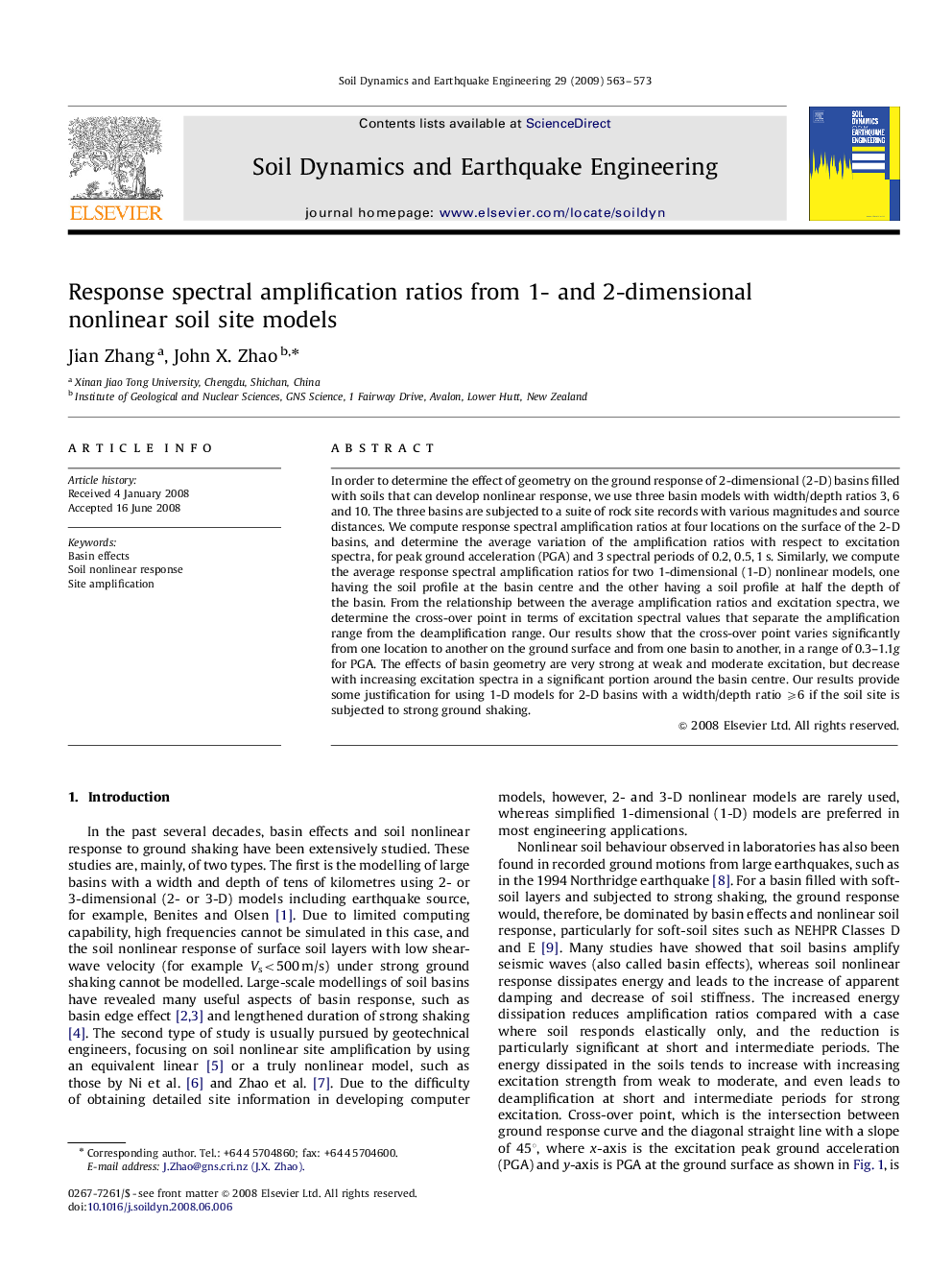| Article ID | Journal | Published Year | Pages | File Type |
|---|---|---|---|---|
| 305055 | Soil Dynamics and Earthquake Engineering | 2009 | 11 Pages |
In order to determine the effect of geometry on the ground response of 2-dimensional (2-D) basins filled with soils that can develop nonlinear response, we use three basin models with width/depth ratios 3, 6 and 10. The three basins are subjected to a suite of rock site records with various magnitudes and source distances. We compute response spectral amplification ratios at four locations on the surface of the 2-D basins, and determine the average variation of the amplification ratios with respect to excitation spectra, for peak ground acceleration (PGA) and 3 spectral periods of 0.2, 0.5, 1 s. Similarly, we compute the average response spectral amplification ratios for two 1-dimensional (1-D) nonlinear models, one having the soil profile at the basin centre and the other having a soil profile at half the depth of the basin. From the relationship between the average amplification ratios and excitation spectra, we determine the cross-over point in terms of excitation spectral values that separate the amplification range from the deamplification range. Our results show that the cross-over point varies significantly from one location to another on the ground surface and from one basin to another, in a range of 0.3–1.1g for PGA. The effects of basin geometry are very strong at weak and moderate excitation, but decrease with increasing excitation spectra in a significant portion around the basin centre. Our results provide some justification for using 1-D models for 2-D basins with a width/depth ratio ⩾6 if the soil site is subjected to strong ground shaking.
